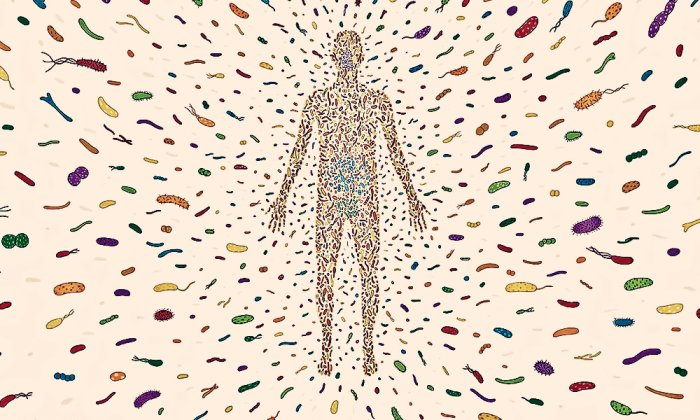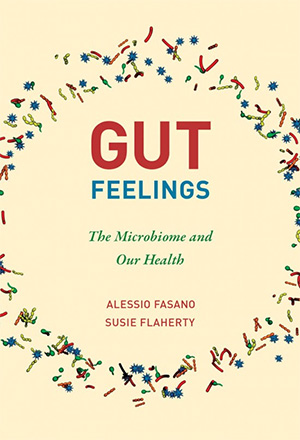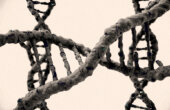The Invisible Organ Shaping Our Lives: Milestones in Human Microbiota Research

Humans have always been explorers. From Magellan to Columbus, from traveling the Silk Road to traversing the Amazon basin, exploration is a rich part of our history. We are driven by curiosity and a deep need to chart new frontiers and new extraterrestrial worlds. But all this time we have been looking for new civilizations far, far away, the most fascinating, complex, and sophisticated civilization ever discovered has been living within us. We just haven’t fully appreciated it.

The incredible ecosystem that we call the human microbiome is home to microscopic species that grow like we do, interact like we do, and speak different languages like we do. During their millions of years of evolution, they have studied the human host carefully and found a way to communicate with us. They understand very clearly our anatomy and physiology, our strengths and our weaknesses, and our biological necessities and goals.
Today, even with our still limited knowledge of our little tenants, we are at the dawn of a scientific revolution — one that, we believe, will lead to a paradigm shift in science and medicine, opening up new ways to treat and prevent diseases as we have never been able to do before. In revisiting the lifestyle trajectory and groundbreaking research that brought us to where we are, it becomes easier to imagine where we might be in just a few years’ time.
Our Evolutionary Journey
For most of our evolutionary journey, we lived as hunters and gatherers. We traveled in small groups, practicing a nomadic lifestyle with few chances to encounter other hominids. Then, three major lifestyle changes — agriculture, urbanization, and globalization — completely revolutionized our evolutionary plan. These changes caused a radical departure from a carefully crafted and ideal symbiotic relationship in which specific lineages of microbes coevolved with humans over millions of years, passing through hundreds of thousands of generations, shaping our biology throughout evolution until the first disruptor, agriculture, arrived.
Agriculture
The domestication of livestock and the cultivation of crops made food procurement much more predictable and less time-consuming. No longer tied to animal migrations and crop cycles, we became settlers, increasing the density of human communities and making interpersonal microbial exchanges more frequent. Living in close contact with animals led to another unplanned consequence, namely the risk of zoonosis (the passage of microorganisms from animal to human host). Combined with a higher consumption of animal protein, these changes caused a major deviation from the planned evolution of the human microbiome’s composition and function.
Urbanization
The second disruptor, urbanization, marked another major milestone in human history. It caused an even greater concentration and interconnection of people, which increased the speed at which exchanges of microorganisms occurred. When this exchange involved pathogens, it led to the spread of new infections. Fast-forward to the 20th century, when these infectious diseases were tackled by the advent and extensive use of antibiotics. The implementation of a highly sanitized environment also had a major impact on the “urban microbiota,” which became less diverse compared to the “rural microbiota” that more closely resembled our original microbiota.
Another consequence of urbanization was far-reaching changes to the global habitat, with the expansion of large cities and highly dense populations, thus limiting areas for extensive agricultural production. This posed additional challenges to human evolution in terms of food procurement and sustainability and created major environmental and social shifts, including concentration of resources — power, knowledge, wealth, and human density — that contrasted with scattered resources in rural areas.
This power differential was found between rural and urban environments. Within urban areas, the same power differential was characterized by extreme inequality between rich and poor populations living in close proximity. This dynamic caused the marginalization of part of the population due to exclusion from the production system, in which mechanization gradually replaced human labor. The segregation between highly populated cities and food supplies coming from scarcely populated rural areas created economic inequities with the multiplication of intermediaries between agricultural producers and consumers.
Globalization
The challenge of maintaining food sustainability for a disproportionately urban consumer community, supplied by a shrinking farming community, was met through globalization, the third disruptor. Now we are in a global village of communication, with the instant exchange of ideas and goods and the constant mobility of people. We can move from one end of the world to another in a matter of hours. However, globalization arrived with a high price tag.
The closer integration of the world economy has facilitated a much faster and unplanned exchange of microorganisms, including the global spread of pathogens through trade and travel. But the globalization of the food supply has had an even greater impact on shifts in microorganisms. The dominant role of the globalized, corporate food system in our modern societies implies that processed foods and, more specifically, mass-produced, empty-calorie nonfoods, like snacks, sweetened beverages, prepared frozen meals, and fast-food items, occupy an exponentially increasing part of the diet of typical consumers in these societies.
To save cost and maintain demand, processed fats, sugar, and salt are used as low-cost ingredients in these foods. The prevalence of these dietary choices means that consumers eat a large proportion of “empty calories” without fiber, high-quality fats, sufficient vitamins, and minerals. Even more worrisome is the fact that what was once an occasional choice — the consumption of unhealthy food — is now the norm as the backbone of the typical Western diet. This is especially true as consumers become more urbanized, undertaking sedentary lifestyles without time to cook from scratch using healthy ingredients.
The old paradigm of describing noninfectious, chronic inflammatory diseases as “diseases of affluence” typical of Western societies has become misleading.
With the appreciation that diet is the most influential factor shaping our gut microbiome, and that dysbiosis (the reduction in microbial diversity) can be associated with a variety of chronic inflammatory diseases, more affluent people are now moving away from junk food and making healthier food choices. The impact of globalization on human health has changed the landscape to the point that the old paradigm of describing noninfectious, chronic inflammatory diseases as “diseases of affluence” typical of Western societies has become misleading. In fact, it is low-income people in industrialized countries as well as in the developing world who currently face the greatest impact from these diseases.
Empty calories are often very cheap calories for people who live in poorer sectors around the world. Consumption of processed or predominantly carbohydrate diets with insufficient whole grains, fruits, and vegetables is more common among the economically disadvantaged, and these dietary traits, studies have shown, have a negative impact on microbiome composition and function. Accordingly, the “hygiene hypothesis” — the theory that increased sanitation through hand washing and water and sewage management, along with social changes like increasingly urbanized lifestyles and smaller households, led to a lower incidence of infection in early childhood that was linked to the rise in pediatric allergic disease — is now being challenged by the “microbiome hypothesis.” This postulates that by having an influence on the evolutionary, symbiotic relationship between humans and our microbiota, lifestyle changes and, most important, dietary changes are the driving force fueling the epidemics of noninfectious, chronic inflammatory diseases worldwide.
Key Milestones in Human Microbiome Research
Now that we have a better understanding of what we did wrong, we may have a path to correct our mistakes and bring the relationship with our microbiome back to symbiotic terms. For a summary of key milestones in microbiome science, coauthor Alessio Fasano has capitalized on an outstanding overview created for Nature’s website by a group of very talented colleagues. Below are his thoughts on their timeline as it relates to the contents of our book, “Gut Feelings: The Microbiome and Our Health.”
Milestone 1: “When we began this book project,” Fasano recalls, “I was convinced that I had experienced in person, both as a spectator and for a minor part as an actor, most of the history of the field of research related to the human microbiome. However, this was a major oversight of scientific history dating back to the 1680s.” Antonie van Leeuwenhoek, making use of his newly developed microscopes, described and illustrated in a letter written in 1683 to the Royal Society of London, discovered five different kinds of “animalcules” (the term he used to describe bacteria) present in his own mouth. He subsequently compared his own oral and fecal microbiota, determining that there are differences between body sites as well as between health and disease. This was among the earliest reports suggesting the existence of a human microbiota.
Milestone 2: Almost two centuries later in 1853, Joseph Leidy published the book “A Flora and Fauna within Living Animals,” which most likely represents the official document considered by many to be the origin of microbiota research. Then the work of Pasteur, Metchnikoff, Koch, Theodor Escherich, Arthur Kendall, and many others laid the foundations of modern microbiology and the modern understanding of infectious diseases by providing key information on host-microorganism interactions. Besides postulating the germ theory of disease, Pasteur also was convinced that nonpathogenic microorganisms might have an important role in normal human physiology. Metchnikoff believed that microbiome composition and interactions with the host were both essential for healthy aging. And Escherich was convinced that understanding the endogenous flora was essential for understanding the physiology and pathology of key gastrointestinal functions. These postulations implied that besides a belligerent relationship with pathogens, the human host also was engaged in a symbiotic interaction with commensals.
Milestone 3: By publishing his famous four postulates in 1890, Robert Koch provided the fundamentals establishing the causative relationship between the presence of a microorganism and a specific infectious disease. His approach was limited, because in that era bacteria could only be cultivated in the presence of oxygen. This limitation meant that the vast majority of nonpathogenic human commensals — that is, organisms that use food supplied by the host — which are typically anaerobes, were overlooked.
Milestone 4: During World War I, German physician Alfred Nissle noticed that one particular soldier did not succumb to dysentery. He wondered if the cause was a protective microorganism in the soldier’s gut. In 1917, Nissle isolated the E. coli Nissle 1917 strain, which remains a commonly used probiotic. He later showed that it antagonized pathogens, so establishing the concept of colonization resistance, whereby human-associated microorganisms prevent the establishment of pathogens in the same niche.
Milestone 5: Milestones 1–4 provided the foundations for the research field of human microbiota that accelerated in the 1940s, when Robert Hungate described in detail the methods, still used nowadays, to grow microorganisms in the absence of oxygen — this is milestone 5. Thanks to these culture techniques, we began to appreciate the complexity of the human microbiome well beyond the boundaries of what was then known. By using anaerobic culture approaches, we could classify different microorganisms occupying many of the human host niches and appreciate their impact on many human physiological functions.
The use of Fecal Microbiota Trasplantation to treat a variety of human diseases, mainly gastrointestinal problems, dates back to fourth-century China, where “yellow soup” was used in cases of severe food poisoning and diarrhea.
Milestone 6: The consequence of an unbalanced microbiome, when pathogens take over specific human host niches, was further appreciated with the use of Fecal Microbiota Transplantation (FMT) as a method to “push the reset button” of an ecosystem that has become detrimental to the host. The use of FMT to treat a variety of human diseases, mainly gastrointestinal problems, dates back to fourth-century China, where “yellow soup” was used in cases of severe food poisoning and diarrhea. By the 16th century, the Chinese had developed a variety of feces-derived products for gastrointestinal complaints as well as systemic symptoms such as fever and pain.
Anecdotal reports suggest that Bedouin groups consumed the stools of their camels as a remedy for bacterial dysentery. Italian anatomist and surgeon Fabricius Acquapendente (1537–1619) further extended this to a concept he called “transfaunation,” the transfer of gastrointestinal contents from a healthy to a sick animal, which has since been applied extensively in the field of veterinary medicine. Interestingly, many animal species are found to naturally practice coprophagy, a sort of self-administered FMT, leading to a greater diversity of microorganisms in their intestines. Slowly, these ideas began to spark interest in 18th-century European physicians, but with no major success until the publication of Ben Eiseman and colleagues’ work in the 1950s. With the start of the “microbiome revolution,” in 1958 they published results from the successful treatment of four people suffering from pseudomembranous colitis, before C. difficile was determined to be the cause.
Milestone 7: In 1965, Russell Schaedler and colleagues added another major cornerstone to microbiome research by reporting the transfer of bacterial cultures to germ-free mice to study the effects of the gut microbiome on the host physiopathology. They found that feeding bacterial cultures isolated from the gut of albino mice free of ordinary mouse pathogens, as well as intestinal E. coli and Proteus spp., to germ-free mice led to the engraftment of the microbiome in a way comparable to the donor mice. They also showed that the gut microbiota of these mice remained stable for several months, and that specific metabolic activities reported from some bacterial strains were not detected unless a complex and diversified microbiota was present, confirming the importance of a balanced ecosystem for an ideal symbiotic relationship between microorganisms and their host.
Milestone 8: In 1972, Mark Peppercorn and Peter Goldman demonstrated that an anti-inflammatory drug could be degraded in conventional rats when cultured with human gut bacteria, but not in germ-free rats, indicating a role for the gut microbiome in drug transformations. From this initial observation, several studies have confirmed the role of the microbiome in drug metabolism as not limited only to the gut, highlighting implications for drug inactivation, efficacy, and toxicity.
Milestone 9: In early 1980, the symbiotic relationship established between the engrafting microbiome and its human host during the first one thousand days of life — and how this relationship will dictate our health trajectory for the years to come — was first recognized. And while the succession of events leading to the establishment of a stable microbiome has been studied for decades, three pivotal studies published in 1981 quantitatively characterized the early acquisition of gut commensals and the study of how feeding shapes our initial microbiome.
Milestone 10: Until the early 1990s, studies of the human microbiota were based on culture-dependent methods — isolating bacteria after cultivating it in various media — which undermined understanding of the great biodiversity of the human-associated microbial communities. Thanks to techniques developed during the Human Genome Project, Kenneth Wilson and Rhonda Blitchington compared the diversity of cultivated and noncultivated bacteria within a human fecal sample in 1996. Because of their pioneering work, the culture-independent method of 16S ribosomal (r) RNA sequencing has become a powerful tool for assessing microbial diversity in the human microbiome.
Milestone 11: The search for the “normal human microbiome” to identify departures from its composition linked to diseases has been elusive and frustrating. In 1998, a study by Willem de Vos and colleagues compared profiles from 16 adult fecal samples, revealing unequivocally that everyone has a unique microbial community. Furthermore, by monitoring two individuals over time, the researchers showed that the profiles were stable over a period of at least six months, suggesting that once an ideal and highly personalized symbiotic relationship is established between the microbiome and its host, there is a strong effort to maintain the status quo as the ideal equilibrium.
Milestone 12: Until the early 1990s, little was known about whether, how, and why gut permeability, or movement between the intestinal epithelial cells, was modulated. There was a growing awareness of the complexity of this intercellular space, which is controlled by the opening and closing of tight junctions between cells. Zonulin, a physiological modulator of this mechanism, was discovered in the early 2000’s. Several studies have subsequently been published linking this molecule to a variety of chronic inflammatory diseases in which dysbiosis has been hypothesized as a pathogenetic component. The key interchange between increased intestinal permeability, including zonulin-mediated changes, and gut dysbiosis contributed to mechanistically linking changes in microbiome composition and function to altered antigen trafficking involved in disease pathogenesis. In other words, a loosening of the spaces between the epithelial cells can allow harmful bacteria and other large molecules to pass from the gut to the bloodstream, resulting in inflammatory conditions in the host as the immune system becomes hyperactivated.
Milestone 13: While bacteria have been the focus of almost the entirety of the microbiome-related literature, it is well appreciated that viruses, fungi, and archaea are also important members of the human ecosystem, with potential effects on human health. In 2001, marine microbial ecologist Forest Rohwer’s research group published a randomized, shotgun library-sequencing method to analyze genomic DNA from a single bacteriophage. (Shotgun sequencing is a method that randomly cuts DNA fragments into smaller pieces and then reassembles them with the help of powerful algorithms.) This was a crucial step toward the much more complex task of analyzing the human virome, the collection of all viruses that are found in or on humans.
Milestone 14: The interplay between the host immune system and microorganisms typically has been interpreted as a war in which immune defenses are principally aimed at eliminating pathogens. The observation that in germ-free animals the immune system matures inappropriately and ineffectively opened a new interpretation of this interaction. It suggested that the previously reductive, belligerent view should be revised to show a much more complex programming of immune system maturation and function by the developing microbiome. A key element in distinguishing pathogens from commensal bacteria, which receive benefit from the host and do no harm, involves the recognition by the host of colonizing microorganisms via pattern recognition receptors (PRR), proteins that recognize molecules often found in pathogens. In 2004, Seth Rakoff-Nahoum and Ruslan Medzhitov provided evidence that the immune system senses commensals through PRRs under normal conditions, and that this sensing is crucial for tissue repair. This finding opened a new perspective on immune response to microorganisms, not as simply a host defense, but also as a symbiotic physiological process in a mutually triangulating effect among the gut barrier (see milestone 12), the immune system, and the microbiome.
In 2018, three independent reports showed that the human microbiome can affect a person’s response to cancer therapy.
Milestone 15: The rising prevalence of chronic inflammatory diseases recorded in industrialized countries during the past few decades has been associated with a Westernized diet that highly influences microbiome composition and function. Early studies using germ-free mice showed that body fat content and insulin resistance are transferable from obese to lean mice through exposure to fecal material. In a 2006 pioneering paper, Jeff Gordon and his collaborators reported that the microbiota of obese mice are more efficient at extracting energy from the host diet compared to the microbiota of lean ones. This phenotype was transferable by transplanting the microbiota from the cecum (a part of the large intestine) of obese mice into lean, germ-free animals. The same group of researchers highlighted the crucial impact that diet can have on gut microbiota and host metabolism, opening up the development of nutrition-based interventions to manipulate the host microbiome affecting human health.
Milestone 16: The staggering quantity of data generated with microbiome sequencing required innovative bioinformatics tools to facilitate their analysis. In 2010, Gregory Caporaso and coworkers described the software pipeline QIIME, which stands for “quantitative insights into microbial ecology,” as a tool that enables the analysis and interpretation of the increasingly large datasets generated by microbiome sequencing.
Milestone 17: Human adaptation to different geographic areas has always been considered a premise of genetic variability. However, with the appreciation that the host microbiome may play a crucial epigenetic role, studying differences in human microbiomes related to different geographic regions became an important focus of research to link lifestyle, environment, and clinical outcome. In 2012, Tanya Yatsunenko and colleagues characterized bacterial species in fecal samples from cohorts living in different regions, including the Amazonas of Venezuela, rural Malawi, and metropolitan areas in the United States. Yatsunenko and colleagues found pronounced differences in the composition and functions of the gut microbiomes between these geographically distinct cohorts and age groups, inferring that there is a strong need to consider the microbiome when evaluating human development, nutritional needs, physiological variations, and the impact of a “Westernized” lifestyle.
Milestone 18: In 2018, three independent reports showed that the human microbiome can affect a person’s response to cancer therapy. Following earlier studies in mouse models, these investigators reported that gut microbiota composition may affect the response of melanoma patients, as well as patients suffering from advanced lung or kidney cancer, to immune checkpoint therapy and tumor control.
Milestone 19: Advances in computational methods have enabled the reconstruction of bacterial genomes from metagenomic datasets. This approach was used in 2019 by three research groups to identify thousands of new, uncultured, candidate bacterial species from the gut and other body sites of global populations from rural and urban settings. This substantially expanded the known phylogenetic diversity and improved classification of understudied, non-Western populations.
Milestone 20: This story is set in the year 2030. It’s a story summarizing coauthor Alessio Fasano’s vision of how microbiome research will radically change the future of medicine. And it’s about the future of a little girl — we’ll call her Gemma — who just happens to be fictional, but who is, in fact, a lot like millions of very real children all around the world. She is an example of someone whose life may be transformed by the kind of research-driven clinical care that will be developed and provided thanks to the amazing work of many individuals. Without them, this 2030 story would not be conceivable.
Gemma is finally asleep. Melanie stands by the window in Dr. Fasano’s office, in the warmth of the late afternoon sun. She is gently swaying, baby in her arms, as she watches her husband in the park across the street with their three-year-old son, Bobby. Bobby and his father are looking for airplanes. Planes flying overhead. Contrails. Any evidence of flight. Like many children with Autism Spectrum Disorder (ASD), Bobby has an all-consuming obsession. His obsession is airplanes. Melanie closes her eyes and breathes in rhythm with the sleeping child resting on her shoulder. She thinks about how easily she could fall asleep, right here on her feet. It has been a long week. Gemma’s ear infection has eased, thanks to a three-day course of a targeted oral antibiotic. But now the baby is constipated and her tummy hurts. There have been stool collections and blood draws and anxious moments. Melanie snaps awake as Gemma’s doctor opens the door. Alternating waves of hyper-alert attention and out-of-body panic wash over her as he begins to speak.
There is good news. And bad news. And more good news. The good news, Dr. Fasano explains, is that Gemma’s whole genome was sequenced at birth — enabling him to use that data, along with gut permeability tests, immune profiling based on a blood sample, and microbiome, metatranscriptomic, and metabolomic analyses performed on a stool sample, to look for both the underlying causes of Gemma’s acute illness and biomarkers known to be predictors of ASD. The tests have revealed that Gemma’s zonula (a marker for gut permeability) appears elevated; her gut microbiome appears unbalanced, with low amounts of F. prausnitzii; her Enterobacteria count is a bit high; and the genes controlling lactate production by Lactobacilli have been downregulated. A metabolomic analysis confirms a reduction of lactate in Gemma’s stools. The whole genome sequencing and epigenetic changes reveal that genes controlling Gemma’s immune response have been activated. For this reason, Dr. Fasano requests a PET scan of Gemma’s brain, which shows neuroinflammation.
Armed with these test results, which Dr. Fasano explains to Melanie, he then turns to his computer and performs a risk analysis revealing that the combination of Gemma’s positive biomarkers, immune profile, specific gene variants, gut microbiome, and metabolome composition carry a 55-fold increased risk that she will develop ASD within nine months.
Melanie catches her breath. She flashes back to the moment, nearly two years ago, when she first heard the word autism used in connection with her son. But this is now. Another time. Another child. A child who is apparently in danger, despite having hit every growth or developmental milestone in her first 12 months of life. Melanie wills herself back into this room, which suddenly seems strangely devoid of oxygen, and into this conversation. Dr. Fasano is saying that there is, in fact, good news. He is prescribing a change in diet specifically tailored to Gemma’s profile to favor the growth of protective microorganisms and a three-month course of a genetically engineered probiotic capable of sensing changes in the gut micromilieu and reestablishing proper microbiome composition and metabolic profiles — thereby preventing the onset of ASD. “Can I allow myself to believe this?” Melanie thinks, remembering that when Bobby was diagnosed ASD wasn’t even treatable — and certainly not preventable. “Could this be true?” she asks out loud. “It is possible,” Dr. Fasano affirms, “because of the amazing work of thousands of researchers from all over the globe.” For the last 350 years, these inspired and persistent individuals have generated an enormous body of work leading to the exploitation of microbiome manipulation for disease interception.
The future looks bright for Melanie’s children. In three months, Gemma will be back in this room for a checkup. Her biomarkers will be back to normal. Her PET scan will be normal. Her childhood will be healthy and happy, and her life will be full of promise. And Bobby will be enrolled in a new treatment protocol, building on the same research that yielded Gemma’s therapies. Bobby’s doctors hope that by reducing the feedback mechanism between the body’s immune response mechanisms and some specific microbiome-derived biomarkers, they can ease his symptoms and drive toward long-term improvement.
Milestone 20 is more than just a wish; it is the reason we get up in the morning extremely excited to start another day of work.
Alessio Fasano is the W. Allan Walker Chair of Pediatric Gastroenterology and Nutrition at Massachusetts General Hospital, Professor of Pediatrics at Harvard Medical School, and Professor of Nutrition at the Harvard T. H. Chan School of Public Health. He is also Founder and Director of the Center for Celiac Research and Treatment at MGH. He is coauthor (with Susie Flaherty) of “Gluten Freedom” and “Gut Feelings,” from which this article is adapted.
Susie Flaherty is an award-winning writer and editor and the Director of Communications at the Center for Celiac Research and Treatment.



